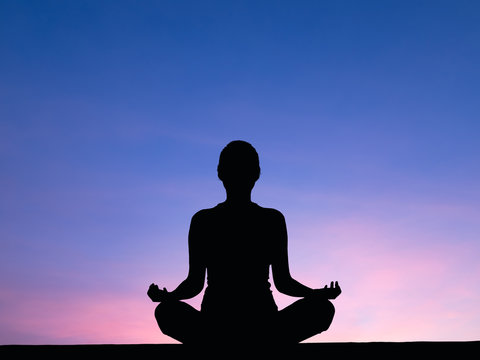How to Meditate: A Step-by-Step Technique to Getting Mindfulness and Calmness
Meditation serves as an effective device for achieving mindfulness and emotional calm in a hectic world. By recognizing the basic principles and techniques entailed in reflection, people can grow a technique that boosts their total wellness.
Understanding Meditation
Understanding meditation involves understanding its essential principles and techniques, which function as the structure for the practice. At its core, reflection is a mental workout focused on advertising relaxation, constructing interior energy, and creating empathy and insight. The practice motivates individuals to focus their focus, frequently through techniques such as deep breathing, visualization, or concept rep.
Reflection can be categorized into numerous designs, consisting of mindfulness, transcendental, and loving-kindness meditation, each with distinct purposes and techniques. Mindfulness reflection highlights present-moment understanding and non-judgmental observation of sensations and thoughts, while copyright involves using certain rules to transcend common mind. Loving-kindness meditation focuses on creating a mindset of love and compassion in the direction of oneself and others.
No matter the technique used, the main goal continues to be constant: to cultivate a much deeper understanding of the mind and its patterns. This self-awareness fosters psychological durability, clarity of idea, and a profound feeling of calmness (How to meditate?). By understanding these concepts and techniques, people prepared for a successful reflection practice that can dramatically improve their overall health
Preparing for Your Technique
Prior to starting your reflection technique, it is vital to produce a setting conducive to concentrate and leisure. Ensure that the area is tidy and cost-free of mess, as a neat setting can aid clear the mind.
Think about the illumination, as all-natural light can boost your state of mind and power. Soft, cozy lights is frequently a lot more soothing than rough fluorescent lights. In addition, pick a comfy temperature, ensuring that you are neither too hot nor as well chilly.
Integrating aspects that promote harmony can additionally improve your experience. This may include soft pillows or blankets for comfort, as well as calming scents from essential oils or incense. It can additionally be beneficial to have a timer set for your reflection session to protect against distractions from clock-watching.
Standard Meditation Strategies

One more reliable method is body check reflection. This involves emotionally checking your body from head to toe, discovering any type of locations of tension or discomfort and knowingly relaxing those muscle mass. This technique fosters a deeper connection in between your body and mind.

Last but not least, loving-kindness meditation focuses on growing concern in the direction of on your own and others. Silently repeat expressions of a good reputation, improving psychological wellness and interconnectedness. Each of these techniques functions as a structure for your meditation trip, enabling you to find the approach that resonates ideal with your individual practice.
Keeping Focus and Mindfulness

Establishing a dedicated meditation area can improve the capacity to keep mindfulness. A quiet, uncluttered atmosphere lessens disturbances, permitting deeper immersion in the practice. Additionally, setting a time frame can aid manage assumptions; beginning with shorter sessions may ease the shift right into longer practices.
Using methods such as body scanning or observing experiences can also boost mindfulness. These methods motivate experts to remain existing and involved with their physicality, securing their focus in the moment. Routine go to this web-site method is crucial; the mind constructs durability gradually, producing a stronger capability for focus.
Incorporating Meditation Into Life
Incorporating meditation right into day-to-day live can transform regular tasks right into chances for mindfulness and self-reflection. By integrating mindfulness practices right into typical jobs, people can cultivate a greater sense of presence and tranquility in the middle of the numerous hours of day-to-day life.
Begin by identifying moments throughout your day where you can stop and exercise mindfulness. During your morning commute, emphasis on your breath or the experiences of the environment around you. In the kitchen area, technique cooking as a reflective technique, appreciating the textures, shades, and fragrances of the ingredients. Even mundane tasks like walking or washing recipes can become possibilities for reflection by routing your attention to the feelings of movement and the audios surrounding you.
Additionally, alloting devoted times for reflection can enhance its method. Start with brief sessions, explanation slowly boosting duration as you end up being more comfortable. Usage tips or hints-- like a details time of day or a relaxing audio-- to establish uniformity.
Ultimately, the objective is to weave mindfulness right into the fabric of day-to-day life, enabling you to come close to each moment with intent, thus enhancing your general sense of wellness and clearness.
Final Thought
In final thought, efficient reflection requires a quiet environment, a comfortable setting, and an emphasis on the breath. Regular reflection, also in brief sessions, cultivates a deeper connection to the existing moment, inevitably leading to greater calmness and mental quality in daily life.
Meditation can be classified right into numerous styles, including mindfulness, transcendental, and loving-kindness reflection, each with unique see functions and techniques. Mindfulness meditation stresses present-moment understanding and non-judgmental monitoring of feelings and thoughts, while transcendental reflection involves the use of specific rules to go beyond ordinary thought processes.With your meditation space prepared, it's time to discover various basic reflection techniques that can aid grow mindfulness and internal peace.Consistently maintaining focus and mindfulness throughout reflection can be difficult, particularly for those new to the method.Developing a specialized reflection area can boost the ability to preserve mindfulness.